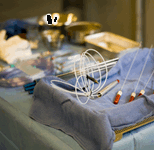 For many people with stubborn areas of fat where they least want it – liposuction may seem to offer the perfect answer. You simply target the problem area and melt the fat away – job done.
For many people with stubborn areas of fat where they least want it – liposuction may seem to offer the perfect answer. You simply target the problem area and melt the fat away – job done.
Or that’s how it appeared until recent research uncovered a problem with this approach. The fat comes back and more of it is likely to be the ‘bad’ sort.
You may lose your tummy fat but a year later find you have a problem with unsightly back fat or fat gathering on your upper arms or on your thighs. Definitely not what was intended when you undertook the procedure in the first place.
The original research – published last year by the University of Colorado – was based on a study of 32 women and following earlier experiments on rats which showed similar results.
Close to 450,000 liposuctions are performed every year around the world and they are not cheap. The overall aim of most women is to lose body fat instantly and usually from their buttocks and thighs.
The results from the studies on humans showed that the overall fat lost from the liposuction procedure was regained after only a year – there was no reduction in total body fat.
Why fat returns
The body continually creates fat cells to store unused fat in the body and the new fat cells are likely to be created in areas undisturbed by surgery. Women in the Colorado study found that fat returned to their upper abdomen (above the waist), shoulders, backs and upper arms.
Fat does not come back to the area where the liposuction was performed because the surgical procedure itself destroys the fat cells there and stops them being recreated.
Dr. Samuel Klein Director of Nutrition at Washington University School of Medecine says that “liposuction violently destroys the fishnet structure under the skin where fat cells live”.
Fat has to go somewhere if it isn’t used as energy so new fat cells are created in places you probably didn’t expect.
Liposuction increases visceral fat
A new study from the University of Sao Paulo in Brazil published in July 2012 – shows that liposuction may have another even more unwanted side effect.
The new study confirms the results from the Colorado research – the fat returns unless more exercise is taken after liposuction. But this study also shows conclusively that a significant percentage of the new fat stored in the body will be ‘visceral fat’ – the really bad stuff.
There are two types of fat stores in the body. Subcutaneous fat is the sort we can all see – pinch around your waist or anywhere else you may have excess fat and what you are holding on to is ‘subcutaneous fat’.
Unfortunately – the body also stores fat internally where you can’t see it and this ‘visceral fat’ is often stored around your vital organs like the liver and heart.
You may not be able to see this type of fat but it has the potential to be much more harmful than the fat you CAN see. Not only that but visceral fat cells get larger more quickly because they extract fat from circulating blood.
It seems that liposuction causes the body to lay down more bad fat than you had before the procedure increasing your risk of serious ill health. Women who had liposuction in the Brazilian study had gained 10% more visceral fat a year after the procedure than before.
Although scientists are not sure why this happens – it is likely that as the process of liposuction destroys natural subcutaneous fat cells the body overcompensates and creates internal stores close by.
Exercise stops the fat returning
The one saving grace as far as visceral fat is concerned is exercise.
The Brazilian study looked in particular at the effects of exercise on fat stores after liposuction. The results showed that if you do nothing the fat comes back – often stored internally as visceral fat. Up your level of exercise and you can stop the fat coming back at all.
According to a recent article in the New York Times “Well Blog” – the experience of many plastic surgeons is that most women who have liposuction do not exercise more afterwards. Psychologically they may be relying on the procedure to get results rather than making lifestyle changes which would produce a better long term result.
So is liposuction worth it?
Strangely – most women in the original Colorado survey reported themselves happy with the results of their liposuction even though their fat deposits settled elsewhere afterwards. Their worst nightmare seemed to be retaining fat on their buttocks and thighs – anywhere else was okay – even though upper body fat can be just as aging and unsightly.
If you are actively considering liposuction – you should certainly factor in the returning fat effect into your decision. To get the best possible result for your money – increase your exercise levels – fat will only return if you let it.
Scientists are also now advising that you only have a liposuction procedure if you are prepared to exercise more afterwards than before – to eliminate the possible increase in internal fat levels.
But then if you are going to do that – why not go for a natural approach in the first place – results will take longer to achieve but your whole body will look better and be more healthy on a permanent basis.

Speak Your Mind